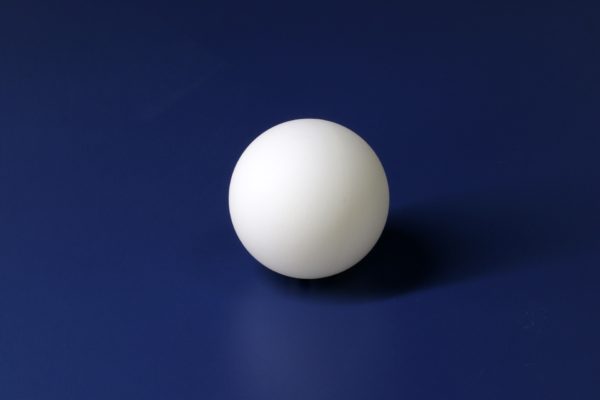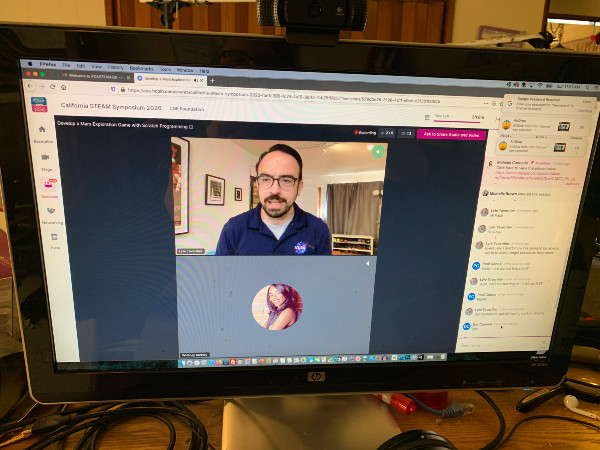by Dot Cannon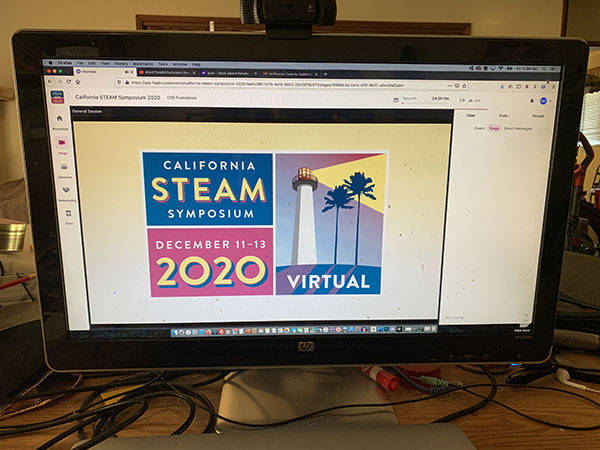
“What’s something that you can’t see, but you know that exists?” asked “Physics Girl” Dianna Cowern in her Sunday-morning keynote.
Day Three, the final day of this year’s eighth annual California STEAM Symposium, had started. And the answer she had in mind? “Wind”.
But “inspiration”, “imagination” and “success” could just as easily have applied.
The California STEAM Symposium, which brought together educators from all over California and from as far away as Tel Aviv, was doing so in an all-new format. Due to the pandemic, 2020 marked their first all-virtual event.
As mentioned in a previous post, the California STEAM Symposium is co-hosted by nonprofit Californians Dedicated to Education Foundation. Their co-hosts are the California Department of Education, and the California Commission on the Status of Women and Girls.
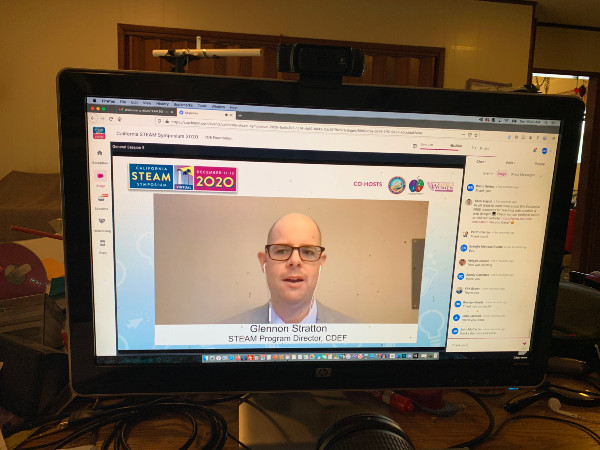
“It takes a village to make this event, and we really thank our sponsors,” said CDE Foundation STEAM Program Director Glennon Stratton. (“This year was only my second, working with the California STEAM Symposium, We didn’t know for awhile, how we were going to do this virtually.”)
Interactivity, great information and keeping it entertaining, appeared to earn an “A”.
Laughter and fun–and physics

(Royalty-free image by Markus Winkler from Pixabay.)
In her keynote, “How to Become a YouTuber (But Not Really)”, Dianna explored what her audience would need, to make engaging videos.
“Find something sharable, that you are passionate about,” she directed. “(And) failure is great, for becoming a YouTuber.”
Focusing on wind and its properties, she demonstrated both–along with curiosity and excitement.
“Do you guys think I can knock over a soda can (with this homemade airzooka)?” she asked. Then, she proceeded to do so.
She also played a video to show what a puff of air, coming out of the airzooka, would look like. Using smoke to outline the air, it was a perfect ring–even when the airzooka was square-shaped!
Dianna went on to show different ways of extinguishing a candle without blowing on it directly. She also outlined different ways in which science was “incredible”–including glowing kittens and bees that could make colored honey if they ate M&M candies!
“I know it seems like we’re being silly,” she remarked. “But playing around, you could (make a new discovery or learn something cool).”
“Sneaky” inspiration

(Royalty-free image by Arek Socha from Pixabay .)
So, where did Dianna’s interest in physics began? She told her audience that her first physics teacher had sparked her imagination. And that teacher had shown all the qualities that work well for Dianna today, as The Physics Girl.
(“Curiosity, sharability, failure and excitement are) all the magic ingredients to becoming a YouTuber,” she said. “What if you think of this (as a) list of things that will help you have a meaningful life?
“That’s my actual sneaky message, To find our own interests and our own passions.”
Third time was the charm
At the close of her presentation, Dianna set up a ping-pong ball in a plastic pipe.
“Do you think we can blow a hole through this soda can?” she asked the audience.
As often happens in live presentations, the technology failed to cooperate on the first two tries. But both Dianna and her audience were having a good time.
“(Should I try this again?)” she asked, laughing after the ping-pong ball stayed inside the pipe.
Chat response was an overwhelming “yes”.
And the third time, pop!
Dianna held up the soda can.
“The ping pong ball went solidly through (this),” she said.
“I’m really glad I was able to relate with you teachers about the challenges of distance learning.”
VR as a classroom implement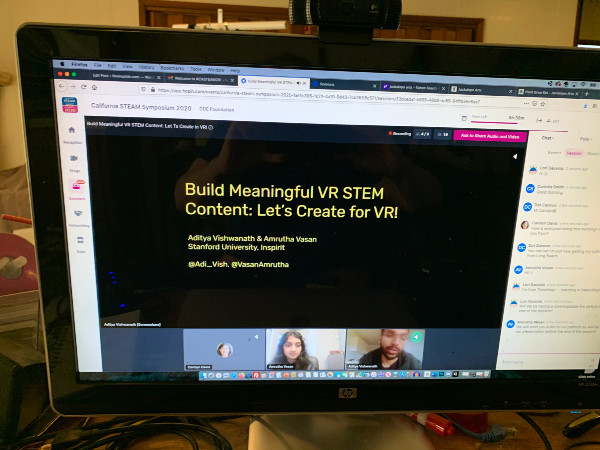
Even prior to Dianna’s keynote, the morning had had a definite “wow” factor.
One of the first breakout sessions, “Build Meaningful VR STEM Content: Let’s Create for VR” challenged educators to take their creativity in a new direction.
“(VR is so real and so powerful, you will believe you are somewhere else while using it),” said Stanford University researcher and Inspirit CEO Aditya Vishwanath.
“(With virtual reality), we can create positive behavior and nudge students to think more deeply and critically.”
Aditya referenced environmental issues and social problems among the areas in which VR can cultivate those critical-thinking skills.
“(We can put students in coral reefs virtually, where they can see the reef dying),” he said. “(Afterwards, they’re more focused on sustainability.) They turn off more lights.”
In addition, he said, VR could increase empathy. Students could find themselves in the virtual “body” of someone of a different ethnicity, age or gender.
“You are seeing life from (someone else’s) vantage point,” Aditya said.
But, he cautioned, there was a pitfall to avoid.
“You don’t want to be bringing in VR (to the curriculum) because it’s new, and because it’s cool. You want to bring it in because it (can do something no other form of media can).”
Inside the microscope

(Royalty-free image by PublicDomainPictures from Pixabay.)
One area in which VR can accomplish that, Amrutha said, was in teaching biology.
“(Students can look inside a microscope itself),” she explained. “(You can) have students react in an environment, interact with physics phenomena.”
Amrutha and Aditya talked about their new platform, Inspirit, which will be starting its pilot program in early 2021.
“We spoke to teachers, to understand what students are struggling with,” Amrutha said. “…At first, we were building models themselves (to assist in teaching areas of biology, including DNA replication. But now we’ve developed the platform) so that you’ll be able to drag and drop, as well as write.)
“We want you to be able to create a virtual world like Fortnite.”
Inside 360 creation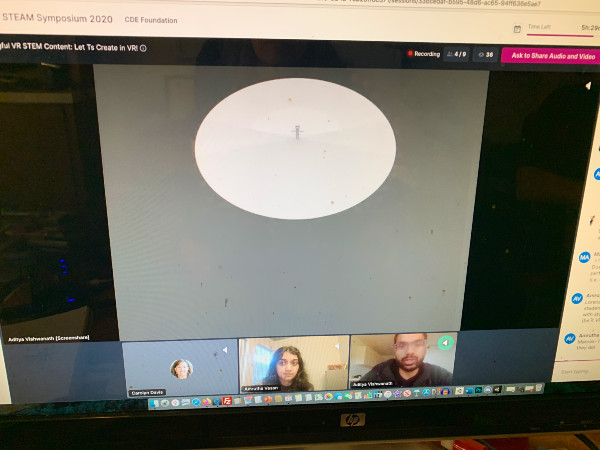
Aditya also offered a look at the steps involved, in creating effective educational virtual-reality applications.
“The classic thing creators do, is storyboarding,” he said. “Essentially, draw out every single actor, every single character.”
Showing a diagram of a VR screen, he explained, “In the very middle is your student, the learner. The tiny, tiny white region is what they see. Everything else is items that are hidden, and you will only see (them) if you move your head around.
“The goal, for you, is to draw out every single scene so that you know how to build this, before you build it. This is a critical, critical step.”
Hands-on creativity
Sunday, as the final day of the first all-virtual California STEAM Symposium, included a new element: Family Day, designed for parents and children. This was an opportunity for families to learn together through maker skills.
“If you hum, you feel vibrations,” said Maker Ed Lead Maker Trainer Linda Le, in her session on “Music as Resistance: Building Your Instruments”. (“I’ve gathered up some materials around the house and would like you to do the same..”)
“With your items, I want you to just start exploring sound. Different vibrations create different sounds.”
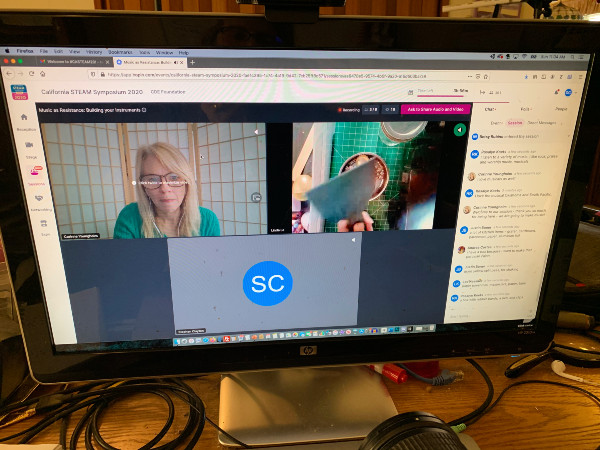
In the session, Linda and fellow Lead Maker Trainer Justin Boner explored those vibrations with session participants. Among the items they tried were paper clips in a glass jar, which jingled with a bell-like sound. They also experimented with a plastic pick against a metal spatula, and glasses of different sizes.
Justin crumpled some wax paper. “I realized, while baking the other day, that all these materials are super loud,” he said.
He also tried creating “woodwind” instruments, with different length straws. “These make different sounds when you blow on them.”
Inside the expo hall
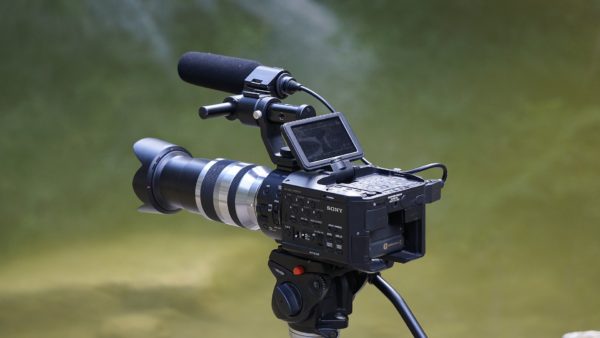
(Royalty-free image by Josep Monter Martinez from Pixabay.)
“Why didn’t they have this in OUR school days?” we grumbled, browsing the virtual Expo Hall.
The program in question: KQED’s “Youth Media Challenges”. Middle-school and high-school students can create media on current issues, which may then be shared on the public-media channel!
We also loved Creator Bots‘ display! These are open-source robot kits where students can build and code their own robots. The robots are 3D printed–and there was even a seasonal one that looked like a wide-eyed turkey!
“Scratch”ing the (Mars) surface
Of course, a lot of great sessions were happening all at once. What we saw is just a sampling (and fortunately, the organizers said the breakout-sessions recordings wouldl be available on demand in the near future).
For the final breakout session we saw, NASA/Jet Propulsion Lab Educational Technology Specialist Lyle Tavernier taught attendees how to “Develop a Mars Exploration Game with Scratch Programming”.
He made it look very easy. Which it is–Scratch involves choosing and arranging “blocks”, which contain code, to direct an object’s motion.
“In order to make this game, we’ve got to make the rover move,” Lyle explained. “We’ve got a couple of different events that we can choose from.
“It’s a good reminder for students that you really have to be explicit, about what you want your program to do.”
(Scratch, in case you’re unfamiliar with it, is a free project, provided by MIT’s Media Lab. It allows educators, students and parents to code their own games and animated stories, very simply. Free tutorials are included.)
“(You can) make the rover drive, …add targets and scoring systems,” Lyle said. “We can add some landing code, which is pretty cool.”
Ending on a magical (key) note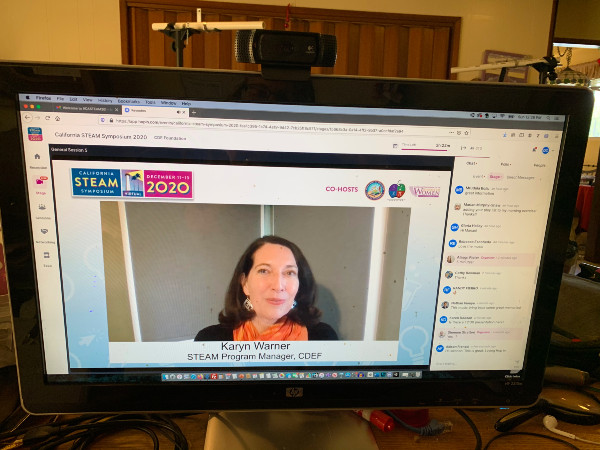
“It’s alchemy,” said CDE Foundation STEAM Program Manager Karyn Warner, as she introduced the 2020 California STEAM Symposium’s final keynote speaker: “Lab Shenanigans” creator Darrion Nguyen.
And in his keynote, Darrion explored the mechanics of his magic.
“I started in biochemistry (at the University of Austin), then switched to a theatre major,” he said.
“A lot of my theatre training enabled me to break down science concepts.”
But, Darrion continued, his classmates were less than encouraging.
“Throughout college, I was bombarded with questions like, ‘oh, theatre, what are you going to do with that?'” he said.
However, his theatre training led to success–such as one of his first TikTok videos, on mitosis. To his surprise, the video had such a positive response that his account “blew up overnight”.
“With all my videos, my main prioirty is to make them entertaining, to really lure in…the viewers, then sprinkle in some educational content,” Darrion explained.
“Do you have some advice for educators, as they’re doing their lesson planning?” Karyn asked. “What can they do to make it engaging, to help the students learn?”
“When teachers are passionate about something, that makes…the students excited,” Darrion answered. “My seventh-grade teacher brought in her two pet snakes and worked them into the lesson plans.”
The core of STEAM
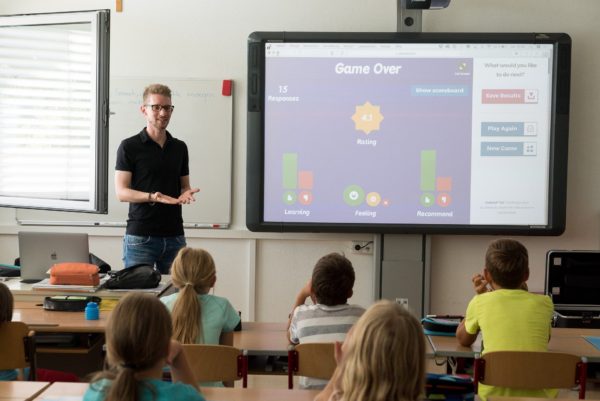
(Royalty-free image by Stefan Meller from Pixabay.)
Several minutes later, Karyn asked, “What recommendations do you have, for students who hate science?”
“When I was an undergraduate, I used to be a camp counselor,” Darrion said. “Try to find something that they’re interested in, and relate it to that concept somehow.”
As the session wrapped up, Karyn referenced the way Darrion “exuded confidence”, on his videos. Was that how he felt, while making them?
Darrion replied, “I want everyone to be confident in themselves, and be confident in what they’re passionate about.”
Karyn followed up with a question about his own confidence: “…How whole do you feel?”
In response, Darrion pointed out the STEAM combination of what he does.
“When I’m filming, I have to be scientifically accurate,” he said. “When I’m editing my videos, that’s when I get to drink the creative juice.”
The eighth annual California STEAM Symposium–and the first-ever virtual one–was concluding, with a Q and A networking session for which Darrion agreed to stay. Judging from the number of “awesome!” and “Thank you!” responses we’d seen in Zoom Calchat throughout the three days, it had been a huge success.
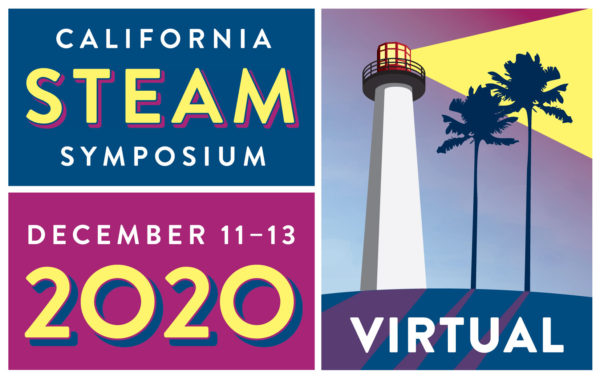
(Graphic courtesy of Californians Dedicated to Education Foundation, and used with permission.)
Congratulations to Californians Dedicated to Education Foundation, the California Department of Education, and the California Commission on the Status of Women and Girls on a fantastic virtual event! Not to mention all the behind-the-scenes staff who made this both interactive and inspiring! Have a great holiday, and we’ll hope to see you–virtually or otherwise–in 2021.
Missed our earlier coverage of the eighth annual, and all-virtual, California STEAM Symposium? Here are links to our posts on Day One and Day Two.
”

